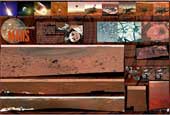
 |
|
|
|
This book is a collection of twelve papers resulting from a workshop held by the celebrated Experimental History of Science Independent Research Group of the Max Planck Institute for the History of Science in Berlin. The workshop’s aim was to present the observatory as a centre of scientific measurement and astronomical investigation, and remove the perception of it being an amateur telescope store house in a small garden or monolithic structure sited in a remote location. This aim was achieved. The papers, written by leading scholars from Europe and the USA, visit important observatories across the world including Paris and Berlin, Paramatta in Australia, Pulkovo Observatory in Russia, Yerkes in the USA and the spectroscopic observatory in Baikal, India. In Chapter 4, Simon Schaffer’s outstanding article describes the incredible micro-astronomy that took place at the Paramatta Observatory in New South Wales, Australia. Built in 1821–22, the building project, installation of equipment and resulting observations of the southern sky were managed by Thomas Brisbane, with astronomers/mathematicians Carl Rümker from Germany and James Dunlop from Britain. Between 1823 and 1834, these personnel “...catalogued over 620 nebulae and double stars... (and) places of more than 7,300 southern stars”. Brisbane and Dunlop also undertook meteorology and geomagnetism studies culminating in a set of very accurate results on time that contributed to a further understanding of the Earth’s shape and movement, and which earned them the Gold Medal of the Royal Astronomical Society. I recommend this book to those interested in the late enlightenment and Victorian period that heralded advances in science and the philosophical stance of astronomy. Ian Welland |
|
|
|
2009 Yearbook This 132-page special edition features the ultimate observing guide for 2009, a review of all the biggest news stories of 2008, in depth articles covering all aspects of astronomy and space missions for 2009, previews of International Year of Astronomy events and much, much more. This 132-page special edition features the ultimate observing guide for 2009, a review of all the biggest news stories of 2008, in depth articles covering all aspects of astronomy and space missions for 2009, previews of International Year of Astronomy events and much, much more.Infinity Rising  This special publication features the photography of British astro-imager Nik Szymanek and covers a range of photographic methods from basic to advanced. Beautiful pictures of the night sky can be obtained with a simple camera and tripod before tackling more difficult projects, such as guided astrophotography through the telescope and CCD imaging. This special publication features the photography of British astro-imager Nik Szymanek and covers a range of photographic methods from basic to advanced. Beautiful pictures of the night sky can be obtained with a simple camera and tripod before tackling more difficult projects, such as guided astrophotography through the telescope and CCD imaging.Exploring Mars  Astronomy Now is pleased to announce the publication of Exploring Mars. The very best images of Mars taken by orbiting spacecraft and NASA's Spirit and Opportunity rovers fill up the 98 glossy pages of this special edition! Astronomy Now is pleased to announce the publication of Exploring Mars. The very best images of Mars taken by orbiting spacecraft and NASA's Spirit and Opportunity rovers fill up the 98 glossy pages of this special edition!Mars rover poster  This new poster features some of the best pictures from NASA's amazing Mars Exploration Rovers Spirit and Opportunity. This new poster features some of the best pictures from NASA's amazing Mars Exploration Rovers Spirit and Opportunity. |
||||||||||||||||||||||||